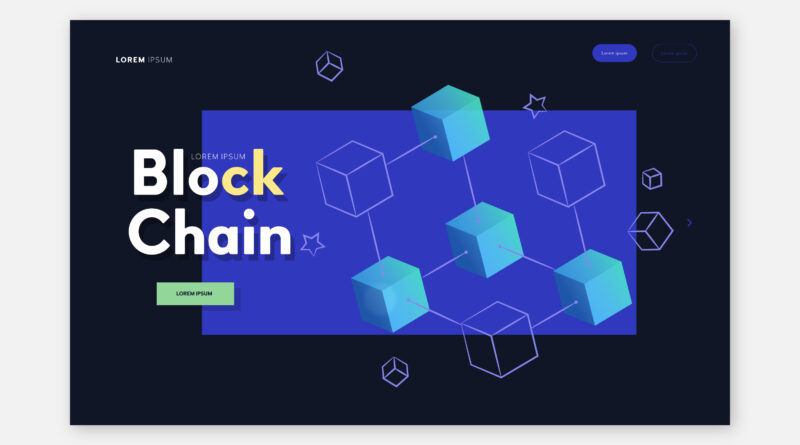The Power of Blockchain: Exploring the Best Books on Blockchain Technology
It is amazing how this technology has gained such significance over the past few years. It’s like we’re observing a digital revolution right now! But here is the problem: In a field that is changing at such a rapid rate as blockchain, it is essential to remain informed. And what better way to accomplish that than by investigating the innumerable sources of information contained in books? That is correct! On this exciting journey, books on blockchain technology can be your reliable companions.
We’ll be talking about some fantastic books on the complexity of blockchain, its potential applications, and the impact it’s having on various industries. Thus, lock in and prepare to uncover the unlikely treasures that will grow how you might interpret this extraordinary innovation.
Keep in mind that knowledge is power. And in the blockchain world, that power has the ability to shape the future. So, let’s get started and read these captivating books to learn more about the amazing world of blockchain technology.
1. “The Basics of Bitcoins and Blockchains: An Introduction to Cryptocurrencies and the Technology that Powers Them” by Antony Lewis
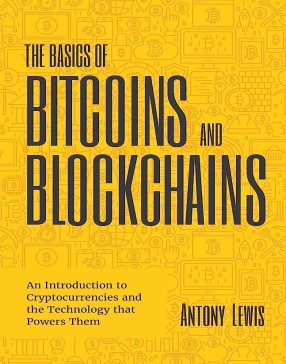
“The Basics of Bitcoins and Blockchains” by Antony Lewis is for anyone who wants to learn more about blockchain technology. Cryptocurrencies can start with this book.
A. Summary of the book’s content, focusing on the fundamentals of cryptocurrencies and blockchain technology
Lewis takes you on a journey through the fundamentals of this book. He describes the operation of cryptocurrencies like Bitcoin and the blockchain technology that underpins them. One of the most important aspects of blockchain technology is that you will gain a clear understanding of the process by which transactions are recorded on a decentralized ledger.
B. Discuss key concepts covered, such as decentralized ledgers, mining, and smart contracts
Let’s now discuss the major ideas Lewis discusses in this book. He breaks down complex concepts into short, understandable points. Some of the most important ideas you’ll explore are as follows:
- Decentralized Records: Lewis describes the idea of decentralized ledgers, in which information is spread across multiple computers or nodes without a centralized authority. It is comparable to a digital bookkeeping system that guarantees security and transparency.
- Mining: Ever wondered how new cryptocurrencies are created? Lewis analyses mining, in which powerful computers solve complex mathematical problems to validate and record blockchain transactions. It functions as the cryptocurrency ecosystem’s foundation.
- Smart Contracts: Lewis introduces the idea of smart contracts, which are coded agreements that can be carried out automatically. These agreements consequently uphold the agreements characterized inside them. You will learn how they have the potential to change finance and supply chain management in new ways.
C. Highlight the book’s approachability and its relevance for beginners in the field
One of the best things about Lewis’s book is its agreeability. He comprehends that not every person is a tech master or a money master, so he separates the ideas such that even a kid can understand them. This book is a great place to start if you’re a student, a curious person, or a professional interested in blockchain.
Lewis is able to strike a balance between depth and simplicity. Allowing you to understand the fundamental ideas without becoming overwhelmed. He gives genuine models and functional clarifications that make the topic appealing and lock in.
Therefore, “The Basics of Bitcoins and Blockchains” by Antony Lewis is a fantastic starting point for those new to cryptocurrencies and blockchain technology. It gives you the knowledge you need to confidently navigate this exciting world.
2. “Blockchain Basics: A Non-Technical Introduction in 25 Steps” by Daniel Drescher, 2017
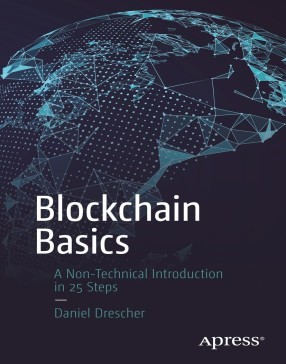
“Blockchain Basics: A Non-Technical Introduction in 25 Steps” by Daniel Drescher, this book is made just for you if you want to understand blockchain but are overloaded by technical jargon.
A. Provide an overview of the book’s purpose to offer a non-technical introduction to blockchain
The aim of this book is simple and powerful: to provide a non-technical introduction to the blockchain world. Drescher understands that not every person is a computer scientist, researcher or cryptography master, so he separates the ideas such that anybody can get to understand. There are no jargon-heavy technical terms, just clear and simple explanations.
B. Discuss the step-by-step approach employed by the author to explain complex concepts simply.
Drescher’s step-by-step approach is one of the book’s best features. He takes you through the blockchain world in 25 manageable steps that are simple to follow. The following are some key aspects of his strategy:
- Building Block by Block: Drescher begins with the fundamentals and gradually advances from there. He makes sure that each step connects logically to the one before it, so you never feel like you’re moving too quickly.
- Basic Language and Similarities: Drescher explains complex concepts in everyday language and relatable analogies rather than bombarding you with technical terms. He wants to ensure that the power of blockchain can be appreciated by anyone.
- Diagrams and Visualizations: Drescher includes visualizations and diagrams throughout the book to help you understand. These visual guides make it easier to understand theoretical ideas and perceive how various parts of the blockchain fit together like puzzle pieces.
C. Highlight the book’s focus on practical applications and use cases of blockchain technology
What makes “Blockchain Basics” even more exciting? Drescher goes beyond theory and dives into practical applications and real-world instances of blockchain innovation. He investigates how blockchain is changing ventures like money, medical care, and inventory network the board, and that’s only the tip of the iceberg.
Drescher demonstrates the immense potential of blockchain beyond cryptocurrencies by highlighting these real-world examples. You will get a glimpse of how this technology is changing our society, making security better, making processes easier to follow, and making people trust each other in different areas.
Therefore, “Blockchain Basics: A Non-Technical Introduction in 25 Steps” provides a non-technical introduction to blockchain and is the most ideal book for you. Prepare to easily explore the blockchain world and discover the practical applications that are rewriting the rules.
3. The Truth Machine: The Blockchain and the Future of Everything by Paul Vigna
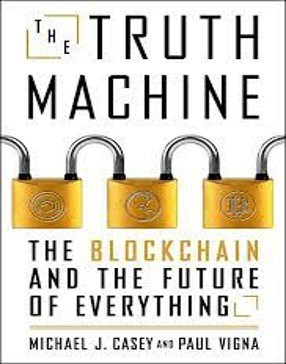
“Reality Machine: The Blockchain and the Future of Everything” by Paul Vigna. This captivating book focuses on the most important aspects of blockchain technology and highlights its potential to change many aspects of our lives.
A. Summarize the key themes explored in the book, emphasizing the transformative potential of blockchain technology
Vigna takes us on a journey where we learn how blockchain can change how we communicate, do business, and trust in the digital age. He goes in-depth about the fundamentals of blockchain and how it can make systems that are transparent, secure, and decentralized. He makes a compelling case throughout the book for why blockchain is more than just a buzzword; it is a technology with the potential to change everything.
B. Discuss the author’s examination of blockchain’s impact on industries like finance, supply chain, and healthcare.
Vigna goes beyond only investigating the theoretical aspect of blockchain. He looks at how it is used in real life and how it affects businesses that affect our daily lives. Here are some of the key points he covers in the book:
- Finance: Vigna explores how blockchain is disrupting traditional monetary frameworks. He discusses how cryptocurrencies, which are powered by blockchain technology, are challenging traditional banking, making it possible to conduct cross-border transactions at prices that are both faster and less expensive, and helping the unbanked population become financially literate.
- Supply Chain: The author explains how supply chain management is being transformed by blockchain. He investigates the possibility of creating supply chains that can be traced and transparent, thereby preventing fraud and guaranteeing the authenticity of products.
- Healthcare: Vigna explores how the healthcare industry can benefit from blockchain. He talks about how to store and share medical records in a safe way, make it easier for different healthcare providers to communicate with one another, and make data privacy and security better.
C. Highlight the book’s exploration of the societal implications and challenges associated with blockchain adoption
“The Truth Machine” doesn’t avoid talking about the more extensive cultural implications and difficulties that come with blockchain adoption. Concerns regarding privacy, regulatory considerations, and the potential effect on conventional intermediaries are all explored in depth by Vigna.
He inspects questions like how blockchain could reshape administration, identity verification, and the distribution of power. He also talks about the problems with blockchain scalability, how much energy it uses, and the need for industry-wide standards.
Vigna provides a comprehensive picture of the opportunities and challenges we may face as we navigate the blockchain revolution by addressing these societal implications and challenges. Therefore, “The Truth Machine: The Blockchain and the Future of Everything” is a thought-provoking exploration by Paul Vigna’s is a must-read. As you embark on a journey into the future of blockchain technology, prepare to be challenged and inspired.
4. Blockchain and the Law: The Rule of Code by Aaron Wright
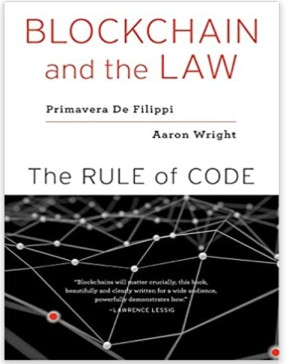
“Blockchain and the Law: A Legal Perspective” is a must-read for lawyers, law students, and anyone else interested in blockchain’s legal aspects. It gives you the information and insights you need to understand how to navigate the complicated legal landscape in the blockchain era.
A. Provide an overview of the book’s focus on the intersection of blockchain technology and legal frameworks
“Blockchain and the Law: The Rule of Code” by Aaron Wright, this fascinating book explores the relationship between legal frameworks and blockchain technology. It delves into the difficulties and opportunities that result from the collision of these two worlds.
Wright focuses on how blockchain innovation disturbs conventional general sets of laws and investigates how the law can adjust to this extraordinary innovation. He delves into the implications for digital governance, property rights, and contracts by examining the rule of code.
B. Discuss the author’s exploration of smart contracts, digital assets, and regulatory considerations.
One of the key focuses is on smart contracts, digital assets, and regulatory considerations in relation to blockchain. Here are a few central issues the creator inspects:
- Smart Contracts: Wright delves into the idea of smart contracts, which are contracts that automatically carry out the terms written in code and are self-executing. He explores the legal implications of smart agreements and how they can reshape conventional legally binding connections, smooth out processes, and limit the requirement for go-betweens.
- Digital Resources: The book likewise dives into the legitimate structure encompassing advanced resources, like cryptographic forms of money and tokenized resources. In terms of ownership, transferability, and regulatory compliance, Wright explores the challenges and opportunities presented by these assets.
- Regulatory Considerations: Wright addresses blockchain technology’s complicated regulatory landscape. He explores how existing legal structures can be applied to blockchain and digital assets, as well as the requirement for new regulations to address unique challenges. The book discusses points like data security, consumer protection, anti-money laundering (AML), and know-your-customer (KYC) guidelines.
C. Highlight the book’s relevance for legal professionals and those interested in the legal aspects of blockchain
“Blockchain and the Law: The Rule of Code” holds great relevance for legal professionals and anyone with any interest in the legal aspects of blockchain innovation. It provides insights into the changing landscape of the law as well as the difficulties that lawyers, policymakers, and regulators face in adapting to the blockchain revolution.
The book by Wright is a great resource for lawyers who want to learn more about the legal implications of blockchain technology. It investigates the ways in which blockchain intersects with existing legal frameworks. As well as the potential legal risks and opportunities and adaptations required to embrace this revolutionary technology.
5. Cryptoassets: The Innovative Investor’s Guide to Bitcoin and Beyond by Jack Tatar
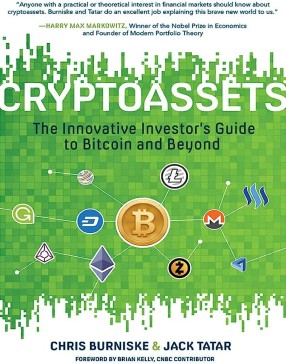
Jack Tatar’s comprehensive book, ‘Cryptoassets: The Innovative Investor’s Guide to Bitcoin and Beyond,’ serves as a groundbreaking resource for individuals looking to explore the world of cryptocurrencies and beyond
“Cryptoassets: The Innovative Investor’s Guide to Bitcoin and Beyond” by Jack Tatar is a resource for forward-thinking investors looking for practical tips and advice. Get ready to jump into the world of crypto assets with certainty and key bits of knowledge.
A. Summarize the book’s emphasis on blockchain-based investment opportunities and strategies
“Cryptoassets: The Innovative Investor’s Guide to Bitcoin and Beyond” by Jack Tatar. This book helps investors navigate the exciting world of crypto assets. Highlighting investment opportunities and strategies based on blockchain technology.
Tatar is aware of the revolutionary potential of blockchain technology and how it has led to the development of a new category of digital assets. He stresses the significance of comprehending and taking advantage of these opportunities in this book. Innovative investors looking to get their feet wet in crypto assets. Industry can use the comprehensive guide that he provides.
B. Discuss the author’s analysis of different crypto assets and their potential risks and rewards.
Tatar delves into the risks and rewards of a variety of crypto assets’ potential. From his analysis, the following are some key points:
- Beyond just Bitcoin: Tatar looks at Bitcoin, the most well-known cryptocurrency. But also talks about other digital assets that have come onto the market. He looks at their characteristics, the technology that underpins them, and potential applications to shed light on their distinct risks and benefits.
- Assessment of Risk and Benefit: Through an examination of the risks associated with investing in crypto assets. The author provides a balanced perspective. He talks about issues like technological vulnerabilities, regulatory uncertainty, and market volatility. Tatar also features potential rewards, like high development potential and early adoption opportunities.
- Diversification of the Portfolio: Tatar emphasizes the importance of crypto asset diversification in an investment portfolio. Through diversification strategies, he investigates how including crypto assets in a conventional investment portfolio may increase overall returns and reduce risk.
C. Highlight the practical insights provided for investors interested in the blockchain space
“Cryptoassets” provides investors interested in the blockchain space with practical insights that go beyond theoretical concepts. Tatar provides advice on how to navigate exchanges, protect digital assets, and comprehend the complexities of blockchain technology.
He also investigates speculation methodologies well defined for the crypto asset market, like long haul holding, dynamic exchanging, and taking part in initial coin offerings (ICOs). Tatar provides investors with the information they require to effectively manage their investments. And make educated choices in the ever-changing blockchain industry.
Conclusion
Finally, we’ve looked at the fascinating books on blockchain technology and how it affects a variety of industries. All through this excursion, we’ve featured the benefit of investigating different points of view through books on blockchain innovation. These books, which provide a variety of perspectives, strategies, and case studies, act as entryways to knowledge. They engage us to go past superficial comprehension and dive into the perplexing subtleties of this exciting field.
Therefore, I encourage you to pick the books we discussed, such as “The Basics of Bitcoins and Blockchains,” “Blockchain Basics: A Non-Technical Introduction in 25 Steps,” “The Truth Machine,” “Blockchain and the Law,” and “Cryptoassets.” These books will help you learn more about blockchain technology by giving you a fresh point of view.
You will gain the knowledge and tools necessary to explore blockchain industry opportunities by diving into these resources. These books will be of great use to you, whether you’re a tech enthusiast, a professional or just a beginner in this technology.
Keep in mind that the blockchain revolution is still in its infancy. And staying up to date is the only way to fully utilize its enormous potential. Therefore, keep looking, keep learning, and take advantage of the opportunities provided by blockchain technology.
With that, we finish up our Journey through the world of blockchain. I appreciate you being here with me. Enjoy reading, and may your curiosity continue to fuel your growth!
Also Read
Tech Classics: Timeless Books Every Techie Should Read
5 Best Technology Books You Must Read Right Now
Quantum Computing: Unveiling the Top Books for Quantum Enthusiasts
